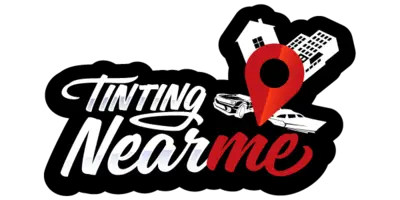2024 Illinois Legal Tint Laws Explained
Just like finding the right pair of sunglasses to protect your eyes from the bright Illinois sun, understanding the 2024 Illinois legal tint laws for your vehicle can be equally crucial. You see, these laws are not only about aesthetics or privacy; they’re about safety, ensuring sufficient light transmittance for clear visibility. As you navigate these regulations, you’ll discover the varying rules for sedans versus SUVs, the nuances of tint reflection, and even potential medical exemptions. And while you might think you’ve got this all figured out, there’s still the matter of penalties for violations and steps for ensuring compliance. So, why stop here? Get to know more about this less-discussed side of driving in Illinois.
The information on myeyerx.net isn’t legal advice; consider it a starting point. Always verify with local and state authorities, as the final decision rests with you. We are not lawyers. For specific legal guidance, we can refer you to legal experts. Remember, knowledge of both state and local laws is essential, and even law enforcement might not be fully updated. We aim for accuracy but advise double-checking for the latest regulations.
Key Takeaways
Key Takeaways
Key Takeaways
- Illinois tint darkness regulations vary depending on the type of vehicle, with sedans requiring more light to pass through the windows than SUVs/vans.
- The windshield can have a non-reflective tint on the top 6 inches, with a Visible Light Transmission (VLT) of 35% on all other windows.
- Mirrored or metallic appearance tints are not allowed on front and back side windows.
- Medical exemptions are possible for individuals with certain conditions, but proper documentation and approval from the Illinois Secretary of State’s office are required.
Need Help Getting a Medical Exemption?
Our Doctors Are Here For You!
MyEyeRx was established with the objective of simplifying the complex landscape of state regulations pertaining to legal tint medical exemptions for window tinting. For individuals seeking to navigate these regulations without resorting to a do-it-yourself approach, we offer a streamlined solution. Our team includes qualified medical professionals who are available to conduct consultations via Zoom. These sessions are designed to assess your eligibility for a medical exemption, ensuring a personalized and efficient process for acquiring the necessary documentation.
Illinois Tint Darkness Regulations
When it comes to the darkness of your vehicle’s tint in Illinois, you need to understand that the state uses the Visible Light Transmission (VLT) percentage to measure compliance with the law. Illinois tint laws are specific, and they vary for sedan vehicles versus SUVs/vans. Tint darkness, for instance, is measured differently for these vehicle types.
For sedans, Illinois window tinting laws require that the front, back, and rear windows must allow more than 35% of light in. However, if you’re driving an SUV or van, the rules change slightly. In this case, your front side windows must allow more than 50% of light in, while for the back and rear windows, you can choose any darkness level you prefer.
As part of the Illinois window tint laws, your windshield tint is also regulated. You’re only permitted non-reflective tint on the top 6 inches. Apart from the windshield, a 35% VLT can be installed on all other windows. Reflective tint is a no-no for all car windows. There’s also good news for those who love a colorful tint; no specific colors of tint are banned by Illinois legal tint laws.
Be cautious though, as non-compliance with these window tinting rules can result in fines ranging from $50 to $500. You can, however, get a tint exemption in Illinois. If you have a specific condition that necessitates a particular tint, the state law allows for this; just make sure you have the proper documentation.
Understanding Tint Reflection Laws
Navigating Illinois’ tint reflection laws, you’ll find that the state expressly forbids the use of tinting film with any mirrored or metallic appearance on front and back side windows of both cars and SUVs. These laws are designed to maintain safety and visibility on the road.
When understanding tint reflection laws, familiarize yourself with the term visible light transmission (VLT). This refers to the percentage of light that a window tint film allows to pass through your car’s windows. In Illinois, different VLT percentages are permitted for different windows in your vehicle.
Window | Maximum Tint Percentage |
Front Side windows | 35% |
Back Side windows | 35% |
Rear Window | 35% |
But there’s a catch. If you have a medical condition that necessitates darker window tints, you can apply for an exemption. However, you’ll need to provide the necessary documentation to the Vehicle Services Department, Special Plates Division.
Illinois’ window tint rules also specify that if your car’s back window is tinted, your car must have dual side mirrors. This rule ensures you retain adequate visibility.
Medical Exemptions and Exceptions
While understanding Illinois tint laws, you might encounter situations where certain medical conditions necessitate darker window tints, and for these, the state allows specific exemptions and exceptions. This is why understanding the specifics of the tinting laws in Illinois is crucial, especially if you or someone you know has a medical condition like lupus erythematosus or disseminated superficial actinic porokeratosis, which can make individuals more sensitive to sunlight.
To be eligible for an exemption, a certification form must be filled out, which should include a licensed physician’s documentation of your medical condition. This form is then submitted to the Illinois Secretary of State’s office for approval. Once approved, a special sticker is issued to be placed on your vehicle’s windshield, indicating that you have a medical exemption for darker window tints. These specific laws are in place to protect individuals who require darker window tinting due to their health conditions, while also ensuring that the tint laws are important for safety and are not abused.
However, it’s important to remember that these medical exemptions are not an excuse to disregard the tint laws entirely. Failure to comply with the tinting laws in Illinois, even with a medical exemption, can lead to fines ranging from $50 to $500. Therefore, it’s crucial to understand the process, follow the rules, and keep your paperwork up to date to avoid any potential legal issues. Your health matters, and so does your compliance with the law.
If you would like to bypass having to fill out paperwork and dealing with the state, we can help you get an online medical exemption for window tint in Illinois.
Penalties for Tint Violations
You’re likely to face fines ranging from $50 to $500 for a first-time offense if you violate Illinois’ tint laws. These penalties for tint violations can drastically increase if you’re found to be a repeat offender. Make sure to follow the 2024 Illinois legal tint laws explained here to avoid these fines.
A first-time infraction can be costly, but continuous non-compliance can lead to even steeper consequences. If you’re caught violating tint laws repeatedly, you might face a fine ranging from $100 to $500, depending on the severity of the violation. This can be classified as a class C misdemeanor, which is a serious offense.
Moreover, if you continue to flout the laws, you risk more than just hefty fines. Your vehicle could even be impounded. This means local law enforcement has the authority to seize your car until all legal matters and penalties are resolved.
To avoid these penalties, ensure your car window tinting adheres to the legal requirements. The laws stipulate specific tint darkness and reflection that must be adhered to. Failure to meet these standards can result in fines and other penalties.
Don’t forget to obtain a tinted window certification as well. This confirms that your window tint meets the legal requirements and can save you a lot of trouble down the line. Always check with your local law enforcement or DMV for specific penalties in your area.
In short, understanding and complying with Illinois’ tint laws can save you from penalties for tint violations. Stay informed and stay compliant.
Ensuring Compliance With Tint Laws
To ensure you’re following the Illinois tint laws, it’s crucial to know the specific Visible Light Transmission (VLT) percentages and other regulations for different types of vehicles. Understanding these rules and regulations will help you identify legal tinting for the vehicle you drive, whether it’s a sedan or an SUV.
In the state of Illinois, different tint percentage restrictions apply to Passenger Vehicles and SUVs or vans. For example, Illinois permits a 35% VLT on all windows except the windshield for most vehicles. However, the back windows can have any tint level, provided the front side windows aren’t tinted. Make sure to familiarize yourself with these specific tint restrictions to ensure you’re within the law.
Remember, reflective tints are not permitted on any windows in Illinois. Additionally, if the back window of your vehicle is tinted, you must have dual side mirrors. These are key considerations when determining the legality of your window tints.
In our 2024 Illinois legal tint laws explained guide, we’ve also highlighted the importance of choosing a reputable installer when getting your windows tinted. This professional will be well-versed in the state’s tint laws and can help you stay compliant.
Non-compliance can result in fines, so it’s essential to stay updated with any changes in laws. You can do this by regularly checking the Illinois General Assembly website for updates in regulations.

Don't want the hassle? Let us take care of your exemption for you!
MyEyeRx.net is here to help you streamlines the process of obtaining a medical exemption for window tint online. Explore our services to easily transform your window tint from non-compliant to legally approved!
Because of the differences in each of the 50 states, we’ve crafted distinct guides for securing window tint medical exemptions for each of the individual states.

Toriano (Tory) Dewberry
Become one of the many satisfied clients Toriano has assisted in obtaining a medical exemption without stepping out of their homes. Click the button below to begin and discover if you're eligible for a medical exemption.

Toriano (Tory) Dewberry
Become one of the many satisfied clients Toriano has assisted in obtaining a medical exemption without stepping out of their homes. Click the button below to begin and discover if you're eligible for a medical exemption.
Frequently Asked Questions (FAQ'S)
What Is the Darkest Legal Tint in Illinois?
In Illinois, the darkest legal tint varies depending on the vehicle type. For sedans, it’s above 35% visible light transmission (VLT) for most windows. For SUVs/vans, it’s above 50% VLT. Quality, durability, and costs of tints can vary. Incorrect installation or removal processes can cause safety concerns. Failing to comply with these laws may lead to legal consequences. However, the right tint provides benefits like reduced glare and increased privacy.
Will I Get Pulled Over for 20 Tint in Illinois?
Driving with 20% tint in Illinois is like playing roulette; you’re taking a gamble. The legal tint visibility is 35% for sedans. While tinted windows offer benefits like glare reduction, they also increase traffic risks due to decreased visibility. If spotted by police, you’re likely to face penalties, possibly a fine or mandatory tint removal. It may also impact your insurance coverage. To avoid these hassles, consider proper tint installation meeting Illinois laws.
Is 15% Tint Legal in Il?
In Illinois, having a 15% tint on your vehicle’s windows isn’t legal. For sedans, the state law requires a minimum of 35% light visibility. SUVs and vans require at least 50% visibility on front side windows. You’ll risk police interactions, traffic citations, and legal consequences with darker tints. It’s important to follow tinting regulations for safety concerns and to pass vehicle inspections. The benefits of tinting aren’t worth the potential trouble.
How Do I Get a Tint Exemption in Illinois?
To get a tint exemption in Illinois, you’ve to follow a meticulous process. You need a signed Illinois Tinted Window Medical Certification form from a licensed physician, validating your medical justifications. Submit this to the Illinois Secretary of State’s office. If approved, they’ll issue an exemption sticker for your car. Be aware of legal implications if you abuse the exemption. Always stay informed about renewal procedures and law enforcement updates.

MyeyeRx.net
Ensuring your tint is not just about style, but legality and safety.
Let us guide you through the maze of state regulations to legal clarity.

Conclusion
In the end, it’s crucial to respect Illinois’ 2024 tint laws. Surprisingly, around 30% of traffic stops involve tint violations. That’s a significant number, isn’t it? So, don’t risk a hefty fine or safety hazards. Stay up-to-date with the rules, whether you drive a sedan, coupe, SUV, or van. Remember, it’s not just about following the law, it’s about ensuring your own safety and the safety of others on the road. Stay safe, stay legal.
Looking to find a Reputable Window Tint Company In Illinois?
Checkout Tintingnearme.com to Find A Local Tint Shop
After learning about window tint laws, the next step is to find a trusted local window tinting shop. Tinting Near Me offers a selection of reputable shops knowledgeable in both quality tinting and legal standards, including medical exemptions.
Choose a shop from their list for expert service that meets legal requirements and enhances your vehicle’s compliance and protection.


